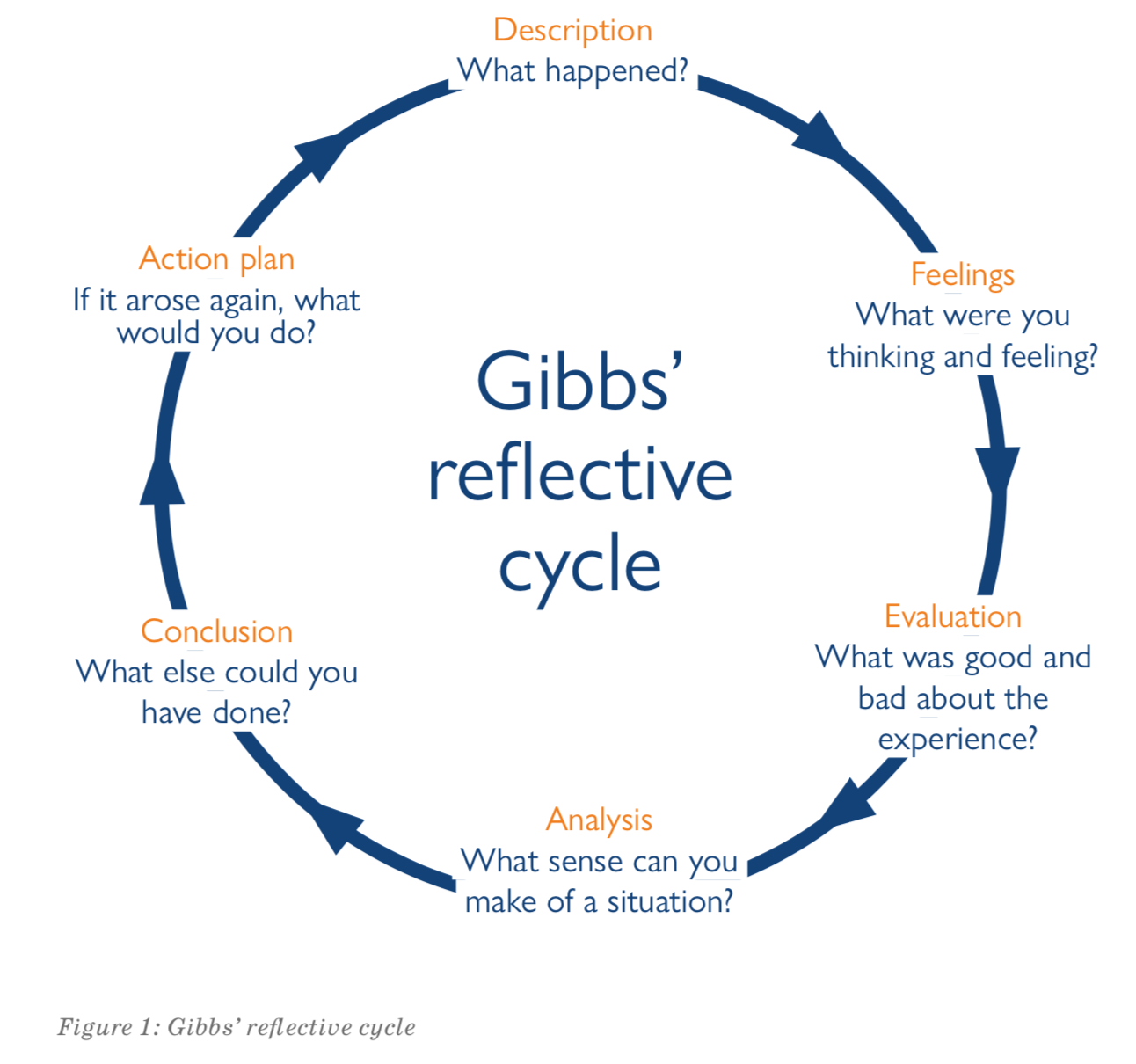How to review models of reflection
There are many models of reflection, with Kolb (1984), Gibbs (1988) and Rolfe et al (2001) being some of the main ones. Most deal in similar themes of ‘experience’, followed by ‘what happened?’ and finally ‘what will you do?’. The Rolfe model is one of the simpler versions of this, with its ‘What?’, ‘So what?’ and ‘What next?’ questions. Gibbs’ model of reflection (pictured below) is more detailed and includes focusing on the emotions felt at the time.
This, I feel, gives an important extra layer to the reflection when applied to a healthcare environment (for the reasons listed above). I used the Gibbs model in my assignment and it is the one I aim to use more in the future. However, reflection is a very personal process. It does not need to be done all the time and you do not have to follow one model (or any) of reflection.
What is important, however, is that you engage with reflection voluntarily and wholeheartedly. As Kelsey and Hayes (2015) suggest, there is a possibility that forcing practitioners to reflect using a model could cause them to reject the notion of reflection totally, which is not what we want to happen at all.

Order Now